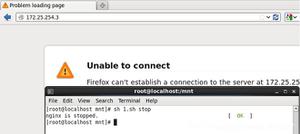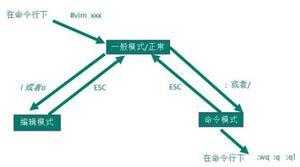Spring初始化ApplicationContext为null
本文内容纲要:Spring初始化ApplicationContext为null
1. ApplicationContextAware初始化
通过它Spring容器会自动把上下文环境对象调用ApplicationContextAware接口中的setApplicationContext方法。
我们在ApplicationContextAware的实现类中,就可以通过这个上下文环境对象得到Spring容器中的Bean。
使用方法如下:
1.实现ApplicationContextAware接口:
package com.bis.majian.practice.module.spring.util; import org.springframework.beans.BeansException;
import org.springframework.context.ApplicationContext;
import org.springframework.context.ApplicationContextAware;
public class SpringContextHelper implements ApplicationContextAware {
private static ApplicationContext context = null;
@Override
public void setApplicationContext(ApplicationContext applicationContext)
throws BeansException {
context = applicationContext;
}
public static Object getBean(String name){
return context.getBean(name);
}
}
2.在Spring的配置文件中配置这个类,Spring容器会在加载完Spring容器后把上下文对象调用这个对象中的setApplicationContext方法:
<?xml version="1.0" encoding="UTF-8"?> <beans xmlns="http://www.springframework.org/schema/beans"
xmlns:xsi="http://www.w3.org/2001/XMLSchema-instance" xmlns:tx="http://www.springframework.org/schema/tx"
xmlns:context="http://www.springframework.org/schema/context"
xsi:schemaLocation="http://www.springframework.org/schema/beans
http://www.springframework.org/schema/beans/spring-beans-3.0.xsd
http://www.springframework.org/schema/tx
http://www.springframework.org/schema/tx/spring-tx-3.0.xsd
http://www.springframework.org/schema/context
http://www.springframework.org/schema/context/spring-context-3.0.xsd" default-autowire="byName">
<bean id="springContextHelper" class="com.bis.majian.practice.module.spring.util.SpringContextHelper"></bean>
<context:component-scan base-package="com.bis.majian.practice.module.*" />
</beans>
3.在web项目中的web.xml中配置加载Spring容器的Listener:
<!-- 初始化Spring容器,让Spring容器随Web应用的启动而自动启动 --> <listener>
<listener-class>org.springframework.web.context.ContextLoaderListener</listener-class>
</listener>
4.在项目中即可通过这个SpringContextHelper调用getBean()方法得到Spring容器中的对象了。
2. ApplicationContext加载机制
1.加载器目前有两种选择:ContextLoaderListener和ContextLoaderServlet
这两者在功能上完全等同,只是一个是基于Servlet2.3版本中新引入的Listener接口实现 而另一个基于Servlet接口实现。开发中可根据目标Web容器的实际情况进行选择。 配置非常简单,在web.xml中增加:
org.springframework.web.context.ContextLoaderListener
或者
<servlet> <servlet-name>context</servlet-name>
<servlet-class>
org.springframework.web.context.ContextLoaderServlet
</servlet-class>
<load-on-startup>1</load-on-startup>
</servlet>
通过以上配置,Web容器会自动加载/WEB-INF/applicationContext.xml初始化
ApplicationContext实例,如果需要指定配置文件位置,可通过context-param加以指定:
<context-param> <param-name>contextConfigLocation</param-name>
<param-value>classpath:applicationContext-bean.xml,classpath:spring-jamon.xml </param-value>
</context-param>
2.Spring提供ApplicationContext多种实现机制
简单的用ApplicationContext做测试的话,获得Spring中定义的Bean实例(对象).可以用:
ApplicationContext ac = new ClassPathXmlApplicationContext("applicationContext.xml");RegisterDAO registerDAO = (RegisterDAO)ac.getBean("RegisterDAO");
如果是两个以上:
ApplicationContext ac = new ClassPathXmlApplicationContext(new String[]{"applicationContext.xml","dao.xml"});
或者用通配符:
ApplicationContext ac = new ClassPathXmlApplicationContext("classpath:/*.xml");
spring为ApplicationContext提供的3种实现分别为:
ClassPathXmlApplicationContext,FileSystemXmlApplicationContext和XmlWebApplicationContext,其中XmlWebApplicationContext是专为Web工程定制的。
其中XmlWebApplicationContext是专为Web工程定制的。使用举例如下:
(1)FileSystemXmlApplicationContext
//加载单个配置文件 ApplicationContext ctx = new FileSystemXmlApplicationContext("bean.xml");
String[] locations = {"bean1.xml", "bean2.xml", "bean3.xml"}; //加载多个配置文件
ApplicationContext ctx = new FileSystemXmlApplicationContext(locations ); //根据具体路径加载文件
ApplicationContext ctx =new FileSystemXmlApplicationContext("D:/project/bean.xml");
注: 这种方式适用于采用Spring框架的独立应用程序,需要程序通过配置文件手工初始化Spring的情况。
(2)ClassPathXmlApplicationContext
//加载单个配置文件 ApplicationContext ctx = new ClassPathXmlApplicationContext("bean.xml");
//配置完成之后,即可通过ContextLoader工具类获取WebApplicationContext
WebApplicationContext wac = ContextLoader.getCurrentWebApplicationContext();
LoginAction action=(LoginAction) wac.getBean("action");
(3) XmlWebApplicationContext
ServletContext servletContext = request.getSession().getServletContext(); ApplicationContext ctx = WebApplicationContextUtils.getWebApplicationContext(servletContext);
注:这种方式适合于采用Spring框架的B/S系统,通过ServletContext对象获取ApplicationContext对象,然后在通过它获取需要的类实例。
3.如何获取ApplicationContext
(1)继承自抽象类ApplicationObjectSupport
说明:抽象类ApplicationObjectSupport提供getApplicationContext()方法,可以方便的获取到ApplicationContext。
Spring初始化时,会通过该抽象类的setApplicationContext(ApplicationContext context)方法将ApplicationContext 对象注入。
(2)继承自抽象类WebApplicationObjectSupport
说明:类似上面方法,调用getWebApplicationContext()获取WebApplicationContext (3)实现接口ApplicationContextAware
说明:实现该接口的setApplicationContext(ApplicationContext context)方法,并保存 ApplicationContext 对象。
Spring初始化时,会通过该方法将ApplicationContext对象注入。
实现方法:
public void setApplicationContext(ApplicationContext arg0) throws BeansException { applicationContext = arg0;
}
获取bean:
ITaskService bean = (ITaskService)applicationContext.getBean(taskServiceName);
3. Spring获取WebApplicationContext为null解决方案
在web.xml中配置Spring,配置如下
<servlet><servlet-name>springServlet</servlet-name>
<servlet-class>org.springframework.web.servlet.DispatcherServlet</servlet-class>
<init-param>
<param-name>contextConfigLocation</param-name>
<param-value>/WEB-INF/applicationContext.xml</param-value>
</init-param>
<load-on-startup>1</load-on-startup>
</servlet>
在Servlet中通过WebApplicationContextUtils.getWebApplicationContext(getServletContext())获取WebApplicationContext对象为null。这是由于除了配置DispatcherServlet,还需要配置ContextLoaderServlet,否则无法获取WebApplicationContext。配置方法如下,在web.xml中加入
<servlet> <servlet-name>context</servlet-name>
<servlet-class>org.springframework.web.context.ContextLoaderServlet</servlet-class>
<load-on-startup>2</load-on-startup>
</servlet>
案例2:
查找原因:xml文件的加载顺序不正确,ServiceBeanUtils还没有加载, ApplicationContext还没有初始化,而服务启动时就有个类通过调用ApplicationContext去取bean进行初始化了
解决方案:先加载ServiceBeanUtils类,去初始化ApplicationContext,然后再加载要调用ApplicationContext的类去初始化此类
4.ApplicationContext初始化方式
在独立应用程序中,获取ApplicationContext:
AbstractApplicationContext context = new ClassPathXmlApplicationContext("applicationContext.xml");
context.close();//释放资源
在web环境中,获取ApplicationContext:
A)ServletContext servletContext = request.getSession().getServletContext();
ApplicationContext context = WebApplicationContextUtils.getWebApplicationContext(servletContext);
B)String contextpath = "org.springframework.web.context.WebApplicationContext.ROOT";
WebApplicationContext context = request.getSession().getServletContext().getAttribute(contextpath);
5.常用获取spring 中bean的方式总结
方法一:在初始化时保存ApplicationContext对象
ApplicationContext ac = new FileSystemXmlApplicationContext("applicationContext.xml");ac.getBean("beanId");
说明:这种方式适用于采用Spring框架的独立应用程序,需要程序通过配置文件手工初始化Spring的情况。
方法二:通过Spring提供的工具类获取ApplicationContext对象
import org.springframework.web.context.support.WebApplicationContextUtils;ApplicationContext ac1 = WebApplicationContextUtils.getRequiredWebApplicationContext(ServletContext sc);
ApplicationContext ac2 = WebApplicationContextUtils.getWebApplicationContext(ServletContext sc);
ac1.getBean("beanId");
ac2.getBean("beanId");
说明:
这种方式适合于采用Spring框架的B/S系统,通过ServletContext对象获取ApplicationContext对象,然后在通过它获取需要的类实例。
方法五:实现接口ApplicationContextAware
说明:实现该接口的setApplicationContext(ApplicationContext context)方法,并保存ApplicationContext 对象。
Spring初始化时,会通过该方法将ApplicationContext对象注入。
使用的时候一定要注意实现了这些类或接口的普通java类一定要在Spring 的配置文件application-context.xml文件中进行配置。否则获取的ApplicationContext对象将为null。
本文内容总结:Spring初始化ApplicationContext为null
原文链接:https://www.cnblogs.com/kxdblog/p/5988027.html
以上是 Spring初始化ApplicationContext为null 的全部内容, 来源链接: utcz.com/z/362323.html








